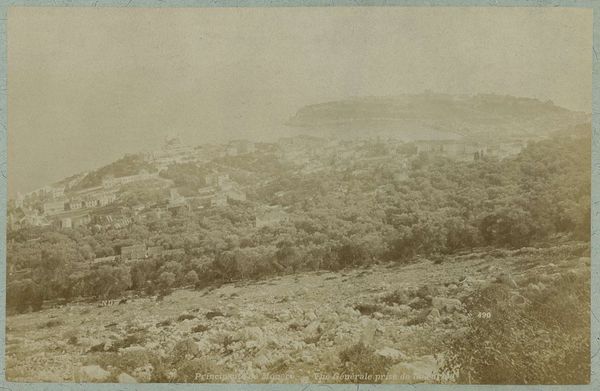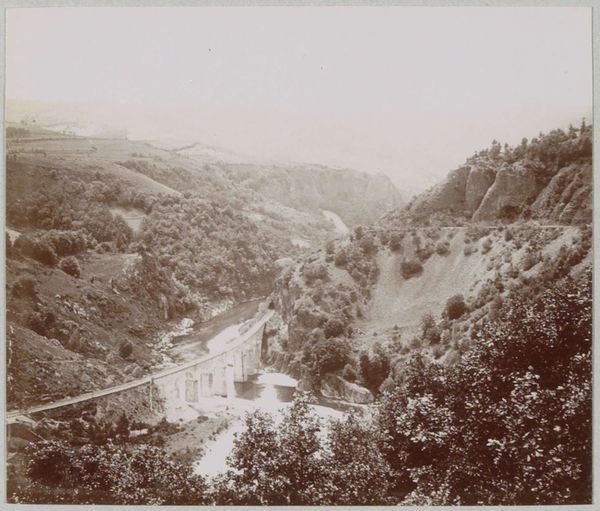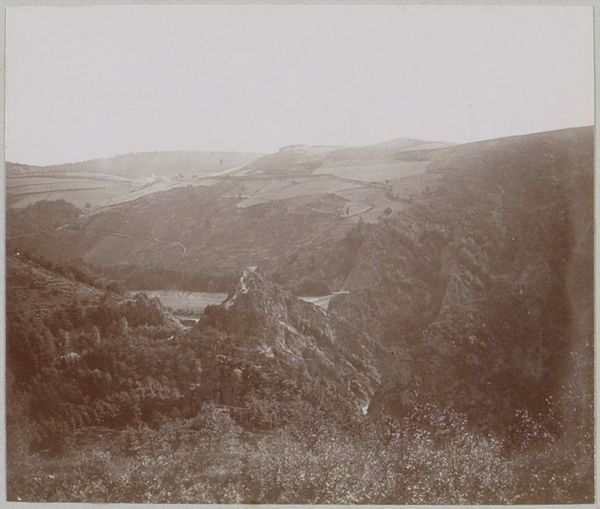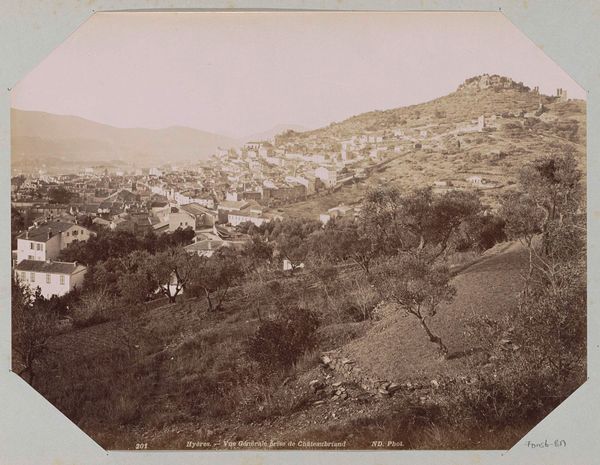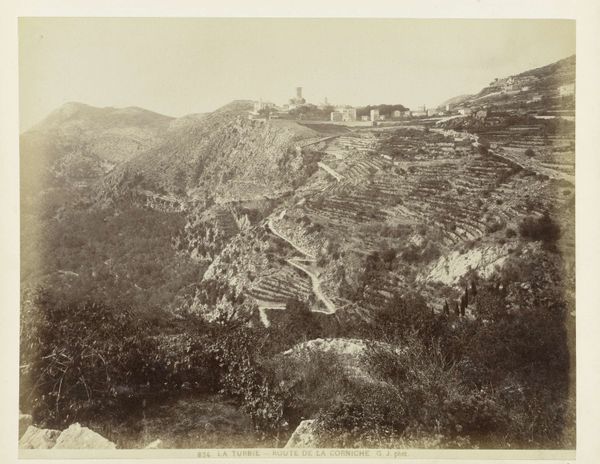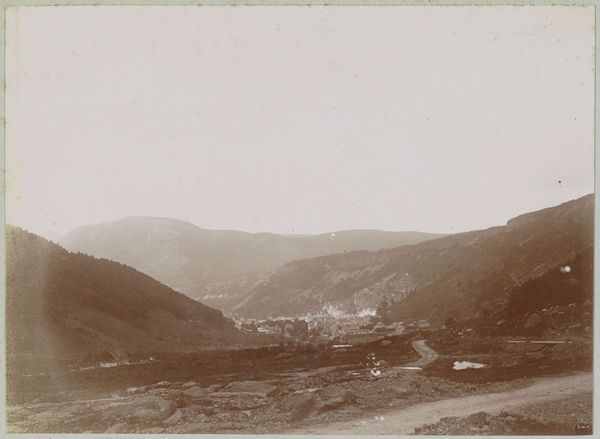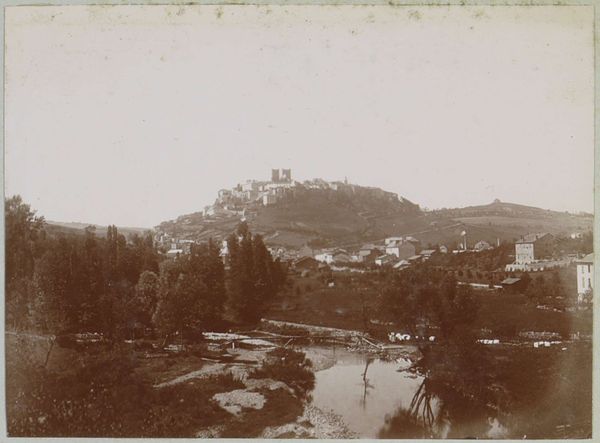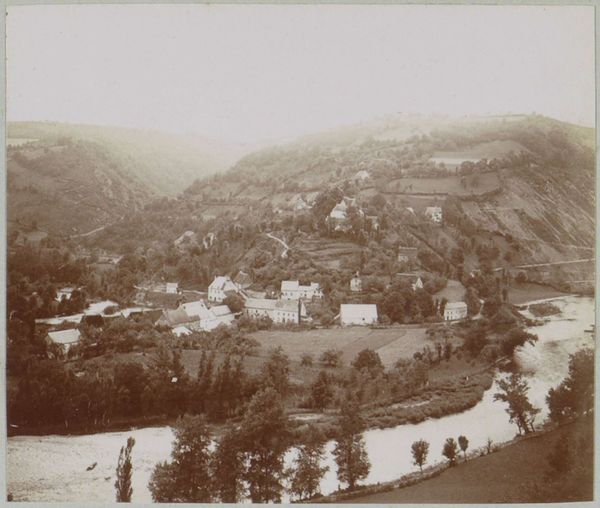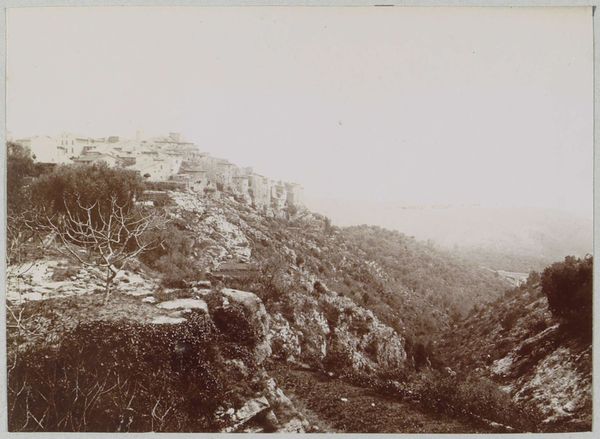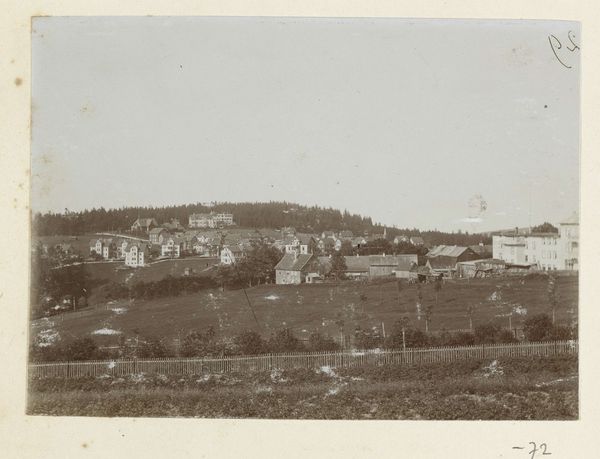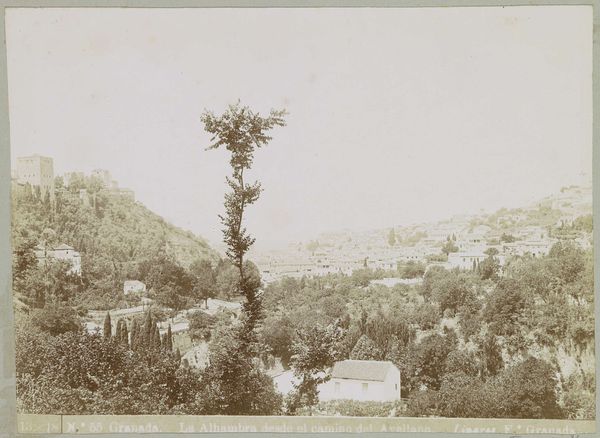
photography
#
pictorialism
#
landscape
#
street-photography
#
photography
Dimensions: height 69 mm, width 82 mm
Copyright: Rijks Museum: Open Domain
Editor: This photograph, "Gezicht op Châtel-Guyon over beboste berghellingen," taken in 1904, seems to capture a city nestled within a natural landscape. The tones are muted, giving it a very pastoral feeling. What social dynamics might be informing a landscape shot like this one? Curator: This image offers a compelling tension, doesn't it? It’s easy to appreciate the picturesque vista, but let's think about the photographer's implicit perspective. The 'civilized' town is clearly taking over the "untamed" landscape. Do you notice how the photographer places us above, almost surveying the scene, hinting at notions of progress and perhaps, control? Editor: I see what you mean. There’s definitely a sense of human influence, not just appreciating nature but framing it within the context of civilization. Is it maybe romanticizing colonization or capitalist expansion by obscuring their violence? Curator: Exactly! And within that lens, we have to question whose gaze is privileged. Was this work created for the consumption of tourists or residents of that era? How did this interplay between nature and urban space affect people of different classes and backgrounds living at that time? Editor: That’s fascinating. Thinking about whose perspective is prioritized really shifts my understanding. I hadn’t considered the class dimensions present, or the political undertones of photographing a landscape in this way. Curator: It’s crucial to remember that landscapes are never neutral. They’re always imbued with layers of social, political, and historical meaning. Considering the power dynamics present, even in what seems like a simple scenic photograph, reveals so much. Editor: I’m definitely going to look at landscape photography differently from now on. This has highlighted how photography itself plays into larger systemic structures of power. Curator: Absolutely. Keep asking those critical questions. The beauty of art lies in its ability to reveal these hidden complexities, doesn’t it?
Comments
No comments
Be the first to comment and join the conversation on the ultimate creative platform.
